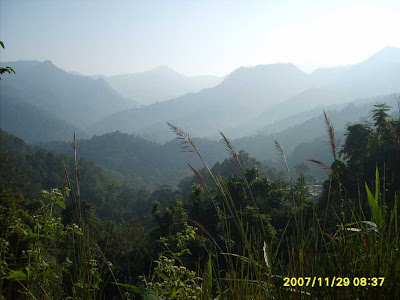Pray for the prey?

Excellent photo borrowed from Jonathan Kwong
(December 18th. HTT) Not a bad morning – one new bird and it made a grand but deadly entrance to the list. It was the Crested Goshawk (45cm). I first saw it as it downed a bird close to the ground and then flew into the low branch of a nearby tree. It flew back down to its prey and it was then I caught sight of its brown, wavy barred underparts, the crest was hardly noticeable. A couple of soldiers passed us on a motorbike and saw what had happened and the pillion passenger jumped off and made his way over to the struggle. The Goshawk flew up clutching its prey but the soldier was coming close so it lost its nerve and dropped it. The soldier picked it up and brought it over to us, it was a Spotted Dove (30cm) and the upper thigh was mangled. He laid it on the ground and then, much to our surprise, it launched itself into the air and flew off. One could hardly call it lucky and its chances of survival, with that mangled leg, would be very remote.
This is becoming ridiculous, the only Black-headed Bulbul seen this morning was a grey morph – it’s become an embarrassment reporting this ‘rare’ bird day after day! But then again, it must say something about the breeding of these birds, at the moment I’m not quite sure what but as they become less rare maybe they are producing more of themselves, possibly?
A Bright-capped Cisticola presented itself close to us and gave us a great view of all its markings down to the streaked back, rusty nape and streaked head (winter plumage), pictures don’t do it justice. Its relative the Zitting Cisticola was also seen nearby and I have to say that when someone points it out and asks me what it is I quite often get a cynical look when I tell them. Someone even went so far as to say that I was making up the name, until I showed them the book. I have to say that besides misnomers there are some pretty weird names given to some birds.
As I have mentioned before the Siberian Rubythroat can be difficult to spot due to its habit of skulking in low bushes and undergrowth. Well today a male made a liar out of me. It paraded its scarlet throat and cherk-ed at me for one whole minute and there was nobody to show it to, isn’t that always the case?
And finally a Thick-billed Flowerpecker put in an appearance. Now this bird has nothing to recommend it, it is the original LBJ (little brown job) and is almost certainly overlooked, I’ve probably only seen it seven or eight times. The one thing that brings it to one’s attention is the silly little wiggle of its bottom as it is busily feeding its way through the foliage.



